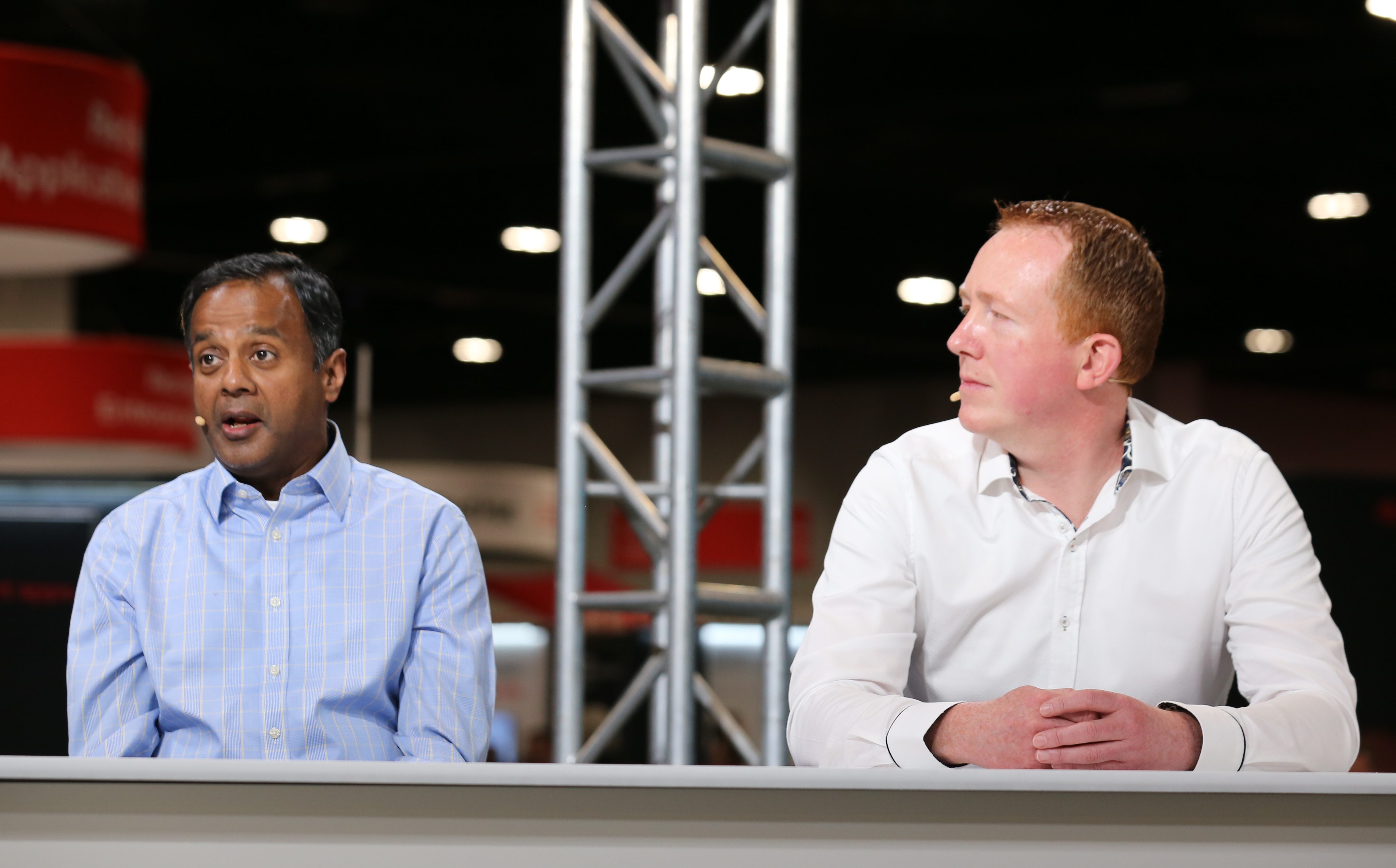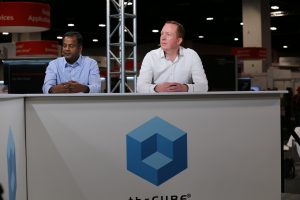 NEWS
NEWS
 NEWS
NEWS
 NEWS
NEWS
Automation is crucial in today’s enterprise. But given that data and other IT factors are sprawling at unprecedented rates, how can companies cope with the challenges of scaling, complexity and resource limitations while maintaining a competitive edge?
That’s where end-to-end automation platforms come in, according to Richard Henshall (pictured, right), director of Ansible product management at Red Hat Inc.
“It’s about having a place that people can go to, that they know they can get easier access, simpler access and the capabilities they need to do what they want to do,” he said. “It’s not the technology itself, it’s the goal they’re trying to get to. That’s the way to change people into the transformation phase of achieving what businesses want — move faster, be more consistent, be more efficient.”
Henshall and Sathish Balakrishnan (left), vice president and general manager of the Ansible Business Unit at Red Hat, spoke with theCUBE Research analysts Rebecca Knight and Rob Strechay at Red Hat Summit, during an exclusive broadcast on theCUBE, SiliconANGLE Media’s livestreaming studio. They discussed end-to-end automation platforms such as Ansible empowering organizations to streamline operations, enhance efficiency and meet the demands of a digital world. (* Disclosure below.)

Red Hat’s Sathish Balakrishnan and Richard Henshall discuss end-to-end automation with theCUBE.
As businesses navigate hybrid complexity and evolving customer demands, the need to automate has become more pertinent. However, organizations must integrate it across the board rather than in isolated silos, according to Balakrishnan.
“The good news is they have a tool, like Ansible Automation Platform, that can do it across every one of these domains,” he said. “With Ansible, you can do compute, storage, networking, everything — operating system patching … the use cases are unlimited.”
Ansible offers a comprehensive solution for automating diverse tasks across various domains. From compute to networking and from on-premises to cloud environments, it provides a unified platform for managing automation needs.
“We’ve also had a lot of innovations, like Event-Driven Ansible and other things, which allow you to make your tools more actionable,” Balakrishnan said. “That’s super important, again. And that’s why it’s mission-critical because we are embedding automation into all of your mission-critical workflows within your company.”
Here’s the complete video interview, part of SiliconANGLE’s and theCUBE Research’s coverage of Red Hat Summit:
(* Disclosure: Red Hat Inc. sponsored this segment of theCUBE. Neither Red Hat nor other sponsors have editorial control over content on theCUBE or SiliconANGLE.)
Support our open free content by sharing and engaging with our content and community.
Where Technology Leaders Connect, Share Intelligence & Create Opportunities
SiliconANGLE Media is a recognized leader in digital media innovation serving innovative audiences and brands, bringing together cutting-edge technology, influential content, strategic insights and real-time audience engagement. As the parent company of SiliconANGLE, theCUBE Network, theCUBE Research, CUBE365, theCUBE AI and theCUBE SuperStudios — such as those established in Silicon Valley and the New York Stock Exchange (NYSE) — SiliconANGLE Media operates at the intersection of media, technology, and AI. .
Founded by tech visionaries John Furrier and Dave Vellante, SiliconANGLE Media has built a powerful ecosystem of industry-leading digital media brands, with a reach of 15+ million elite tech professionals. The company’s new, proprietary theCUBE AI Video cloud is breaking ground in audience interaction, leveraging theCUBEai.com neural network to help technology companies make data-driven decisions and stay at the forefront of industry conversations.